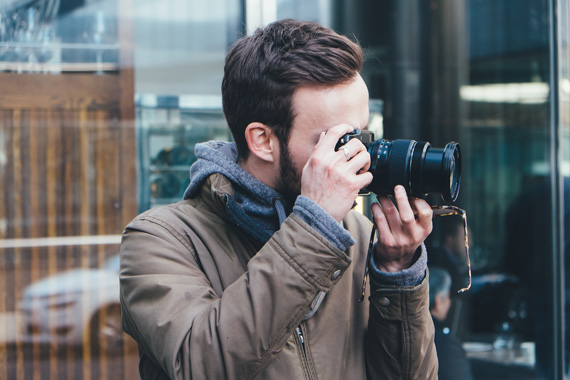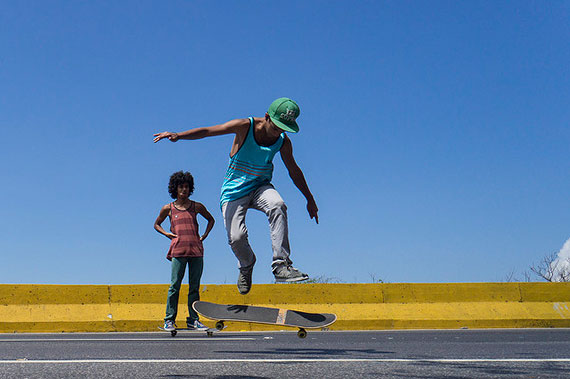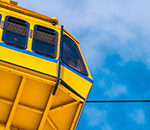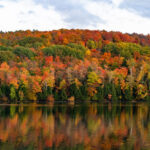It’s a fact that digital cameras have become more advanced today that they require little effort from users in order to capture the best images possible. More features have been enhanced through the years that allow people including children to use digital cameras with great ease.
One of the best features that these latest photographic equipment can offer people is the autofocus system. This is available in both the point and shoot and the DSLR models. But while some serious photographers may consider this as not very useful as it encourages them not to be more creative, many are thankful for it.

Photo by Annie Spratt; ISO 320, f/4.0, 1/100-second exposure.
With the autofocus control in place, digital camera users no longer have to deal with manually focusing the camera on their subjects to get clear photos. They can shoot freely and still get great shots of their subjects. The truth is, this feature is now considered to be more accurate than the manual focusing.
When you’re shooting, you will see in the viewfinder of your DSLR the autofocus layout through an image frame. The active AF sensors are normally in a different color.
There are two types of autofocus sensors, the line and cross. Most of these sensors are shown in line types although the DSLR units feature at least one cross type. The cross type of sensors usually focus more on the subjects compared to the lines.
In DSLR cameras, the autofocus modes can be single shot and continuous. The single shot one is meant for stationary subjects while the continous AF mode is for moving subjects. When taking a non-moving subject, what the AF mode does is focus on that particular subject and locks its focus there until the shutter has been depressed. An advantage of this single shot AF mode is that you have the ability to activate a single point to put your focus. On the other hand, the continuous AF mode will continue to focus as long as the shutter button is depressed even just halfway.
But while there are two separate types of this AF mode, some cameras also feature a combination of the single shot and continuous modes. These include the Canon brand which has its AI focus AF and Nikon which features its Auto Servo AF.
Apart from these AF modes, some DSLR cameras also allow users to use either the focus-priority or the release-priority operation. As its name implies, focus priority locks the shutter button until it decides whether the subject is already in focus. This mode may not be ideal to use if you’re capturing action sequences as time delay can occur.
With the release priority operation, meanwhile, you have every opportunity to capture those action-packed moments as you can press the shutter button any time you want without having to wait for a signal from your camera that your subject is already in focus.

Photo by Daniel; ISO 200, f/6.3, 1/1250-second exposure.
So now, you can truly rely on the autofocus feature of your digital camera. This will let you capture your most desired scenes with the help of your camera itself.
About the Author:
For information about digital cameras, visit 42photo.com, New York’s legendary camera store in business for over 40 years.
Like This Article?
Don't Miss The Next One!
Join over 100,000 photographers of all experience levels who receive our free photography tips and articles to stay current:





I love using the AI Servo mode in my Canon 5D Mark IV. As a wedding photographer, I do not want to miss the couple’s facial reactions as they’re coming up the aisle for the first time as husband and wife.
I just bought a Canon T3 Rebel. I’ve been using the sports mode to take pictures of my grandson playing football. So far, I’ve only used the camera in the auto focus mode with all of the focus points active. While some of my pictures are fuzzy, many turn out just fine. Would it help if I switched to only a single focus point for my grandson’s games?
Thanks for any help you can give me.
One thing I have learned shooting Nikons, and Canons, is that with Nikon, I can usually get better shots shooting in manual. In a seven shot burst of a Egret flying about 20 feet in front of me, I got the first shot perfect, and lost the other seven shots due to focusing. I later tried a 11 shot burst, using my thumb on the focusing ring, of a tricolor heron, from 20 feet, to three feet, then about 15 feet, and lost two to focusing. I have done similar with canon, before it was stolen, and could do either without any loss on AF.
Nikon is a great camera, but it still lacks in the AF to the others. In other shots with my Nikons, I can get excellent shots. I just do not shoot in AF.